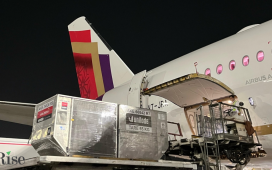CAMP MURRAY, WASH. – Washington Air National Guard Airmen from the 194th Wing participated in a multi-day, base-wide readiness exercise to evaluate their ability to generate, employ and sustain combat forces.
The Phoenix Dawn 23 exercise was a worst-case scenario against pacing threats in a simulated, heavily contested home station environment. The exercise captured several hundred observations in support of 175 exercise inspection guides to grade two mission-essential functions and 35 mission-essential tasks for more than 600 personnel of the 194th Wing.
“I think this exercise was particularly important for this wing because it’s the first time in quite a while that we’ve constructed an exercise to pull almost all of our units in,” said Maj. Marc Buker, 194th Wing exercise project officer. “We pulled in all 20 units for this exercise and you never know when you’re going to need a brother or sister from a different [career field] or a different unit. It is beneficial to gain situational awareness about the Air Force overall to make yourself a more lethal operator.”
The 194th Wing has almost 1,000 Airmen with special warfare, cyber and intelligence missions. The Airmen also support the state of Washington when needed.
“Our ability to transfer from peacetime to wartime is very important in the Air Force and the Air National Guard at large,” said Lt. Col. Timothy Omahoney, 194th Wing chief of exercise, plans and programs, “Everyone involved bought into how important this exercise is to get a check and meter where we are in our combat readiness.”
Readiness exercises are conducted to guarantee interoperability and support any conflict across the spectrum of combat operations, including air, land and cyberspace.
The 194th Wing deployed personnel and tons of cargo with partners at Joint Base Lewis-McChord and the 62nd Aerial Port Squadron, operating with degraded infrastructure, simulated attacks and chemical threats.
“I think things definitely picked up once we had the exercise simulated chemical attack,” said Tech. Sgt. Bryan Landkamer, 194th Wing emergency management specialist. “The chemical, biological, radiological and nuclear cell tracks CBRN-related information and events. When an attack happens, CBRN recon teams will identify the areas that are hazardous and how much chemical agent is in the area.”










